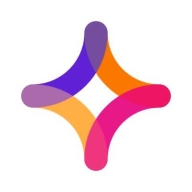

FME and Jitterbit Harmony are powerful tools for data integration. FME is favored for its versatility and complex data transformations, while Jitterbit Harmony is preferred for ease of use and strong cloud capabilities.
Features: FME offers a broad range of supported file formats, complex data transformations, and robust integration capabilities suitable for geospatial data handling. Jitterbit Harmony provides intuitive design, seamless cloud integrations, and minimal coding requirements, making it ideal for quick deployment and maintenance.
Room for Improvement: FME could enhance its user interface and reduce the need for training with an easier onboarding process. Expanding its cloud capabilities would also be beneficial. Jitterbit Harmony could improve support for complex data transformations, broaden file format compatibility, and offer more customization options to users seeking advanced configurations.
Ease of Deployment and Customer Service: FME requires training due to its complex interface but offers extensive on-premise support. Jitterbit Harmony stands out with its straightforward deployment model and effective customer service, emphasizing ease and rapid integration.
Pricing and ROI: FME provides moderate setup costs and a good ROI with customizable solutions. Jitterbit Harmony, although higher in upfront cost, offers strong ROI through efficient project handling and reduced deployment time, aligning well with evolving business needs.
| Product | Market Share (%) |
|---|---|
| FME | 1.6% |
| Jitterbit Harmony | 0.6% |
| Other | 97.8% |


| Company Size | Count |
|---|---|
| Small Business | 2 |
| Midsize Enterprise | 1 |
| Large Enterprise | 4 |
| Company Size | Count |
|---|---|
| Small Business | 8 |
| Midsize Enterprise | 3 |
| Large Enterprise | 1 |
FME is the data integration platform with the best support for spatial data. Run workflows on the desktop or deploy them in a server or cloud environment.
Jitterbit Harmony offers an advanced integration platform that simplifies data transformation, helps users quickly connect apps, and automates workflows, streamlining complex business processes efficiently.
Designed to meet the high demands of modern businesses, Jitterbit Harmony enables seamless integration across cloud and on-premise environments. By leveraging its powerful tools and user-friendly design, users can accelerate innovation, reduce operational costs, and enhance productivity. It bridges the gap between traditional and emerging technologies, ensuring organizations can adapt quickly to market changes and remain competitive.
What are the key features of Jitterbit Harmony?Jitterbit Harmony finds its application across numerous industries, from enhancing data integration in the healthcare sector to optimizing supply chain logistics in manufacturing. It supports financial institutions by improving transaction processing and facilitates real-time data connectivity in retail environments, making it a versatile choice for diverse industries looking to innovate rapidly.
We monitor all Data Integration reviews to prevent fraudulent reviews and keep review quality high. We do not post reviews by company employees or direct competitors. We validate each review for authenticity via cross-reference with LinkedIn, and personal follow-up with the reviewer when necessary.